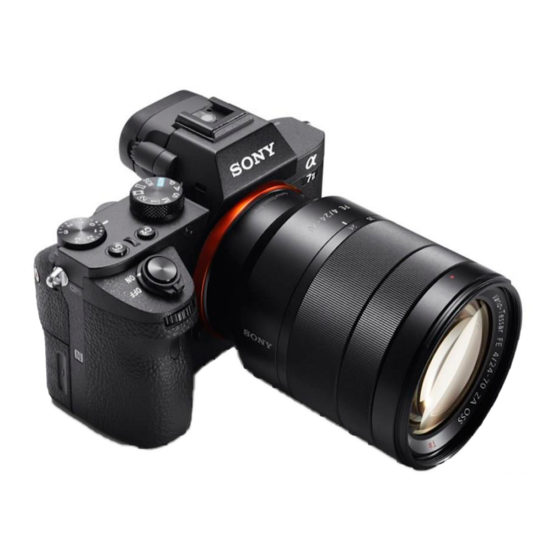Sony a7 III 매뉴얼 - 페이지 16
{카테고리_이름} Sony a7 III에 대한 매뉴얼을 온라인으로 검색하거나 PDF를 다운로드하세요. Sony a7 III 19 페이지.

Setting up a Picture Profile
If you want to take advantage of modern production processes and produce a great
looking film, colour grading in post is an absolute essential process in order to produce a
professional looking film that looks fantastic.
In order to do that, you need to use Picture Profiles and Log footage when filming, so it
can then be taken into colour grading in the right format.
Log footage comes in many different forms, depending on the manufacturer of the camera,
but the main types are Cine4, S-Log-2, S-Log-3, and also V-Log, C-Log to name but a few.
Manufacturers tend to have their own formats.
Cine4: Less dynamic range, but you get less noise in the shadows and it is less work to grade
afterwards, so good to use for starting out in colour grading.
S-Log 2: Great dynamic range in highlights and shadows, for many this is the best of both.
You have to over expose it by 2 stops. This profile is not as good for footage at night due to
the noise levels produced because of the 2 stop increase in exposure.
S-Log 3: Even more dynamic range and contrast, once again the drawback to this is that it
can create more noise in the shadows than S-Log 2.
I have not researched C-Log, V-Log or others thus far, but they are designed to perform
similar jobs to the profiles above.
Custom White Balance Settings
One thing you can do to ensure all your shots are balanced going in to post; is to set the
white balance to custom for each location you shoot at. This way all shots will be exposed to
the same level and the camera will not automatically shift during a scene if set to auto. This
results in extra work in post to balance and colour grade correctly.
Standard TV, smartphone and general displays use Rec709, which has 6 stops of light.
Whereas S-log 2 has 12 stops of light. Log footage records a larger amount of light, with
which colour grading can be carried out. Whereas there are limited processes that can be
done to Rec709 footage due to the limited stops of light.
Bitrate vs noise level:
There is a strong correlation between these 2. The higher the bitrate, the lower the noise.
The lower the framerate, the more bits per second per frame you will get. So 100Mbps at 24
fps would produce less noise than 100Mbps at 48fps. So, in this case, the best setting is 4k,
100Mbits/24fps.
Creative Media Centre
14
Sony A7 III Settings Guide
David Turner
October 2019
